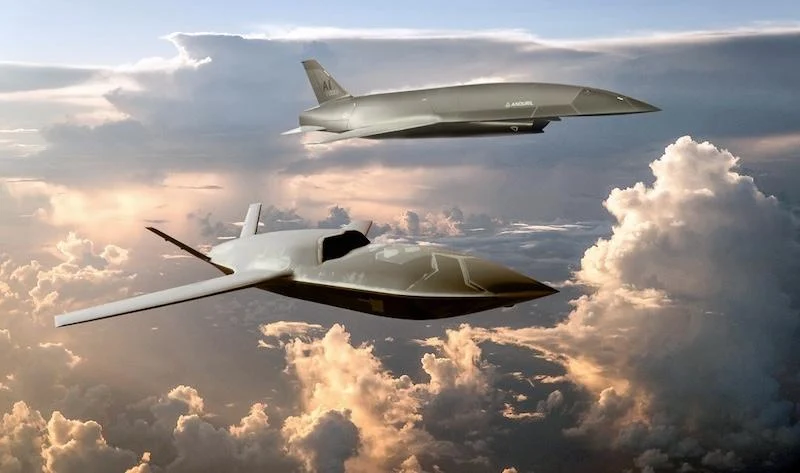It’s been quite the week for collaborative combat aircraft (CCA). Just as European defense tech giant Helsing unveiled its own drone fighter concept in Munich yesterday, there was some pretty big news on the US front: Aviation Week reported that Shield AI and Raytheon (RTX) have been tapped to provide autonomy software for the U.S. Air Force’s CCA fleet.
RTX will provide the autonomous brains for General Atomics’ CCA model—the YFQ-42A—and Shield AI’s Hivemind autonomy software will power Anduril’s YFQ-44A, a Fury variant, according to the reporting.
Plus, on Wednesday, RTX’s Pratt & Whitney wrapped up testing on a small turbofan engine that could be used on CCA variants. Looks like the primes haven’t been beaten out quite yet.
High-flying friends: We’ve droned on (get it) about CCA a bunch, so we’ll keep it brief: the idea is to build autonomous aircraft that can fly (and fight) alongside manned platforms like the F-35 as part of the next generation air dominance (NGAD) program.
- Anduril and General Atomics won the competition to build production-ready prototypes for the program in April 2024.
- GA’s variant flew for the first time back in August, and Anduril is planning for a “semi-autonomous” first flight in October, according to company officials.
- Other companies, including Lockheed Martin and (now) Helsing, have also unveiled concepts for “loyal wingmen.”
But in order for these super-fast drone fighters to work without pilots, they need some pretty powerful software. That, apparently, is where Hivemind and RTX’s mission autonomy software suite will come in.
A bit on Hivemind:
- Shield has been building autonomy software since it was founded in 2015. It scored an early contract with the Defense Innovation Unit to build autonomy solutions in 2016.
- Hivemind acts as an AI pilot for aircraft and robotic systems, and can help drones perform missions with little to no human-in-the-loop—even in jammed and contested environments. It’s designed to be platform-agnostic and enables swarming, teaming, autonomous flight, and all those other fun human-free things.
- Shield AI has been contracted to deploy Hivemind and its hardware by a whole slew of companies and military agencies, including the US Navy, Airbus US, the US Coast Guard, and General Atomics.
- The software also powers Shield’s own UAV, V-BAT.
For what it’s worth, Shield AI’s autonomy stack has made it very, very valuable. The company raised $240M this year, bringing its valuation to around $5.3B.
Eat cake: The mission autonomy software built by megaprime RTX isn’t too shabby, either. Like Hivemind, it enables swarming and is denied for contested environments. It’s also designed to be modular, meaning other hardware, sensors, and payloads can plug into the interface.
The tool has been deployed on a number of autonomous systems, including RTX and subsidiary Collins Aerospace’s own drones. Interestingly, RTX and Shield AI signed a partnership back in July to integrate Hivemind into some of RTX’s hardware. Bit of a grey area, no?
Out at sea: While Shield AI declined to comment on whether they’ve been officially tapped for the CCA autonomy software program, a test with the US Navy this week at least showed that they’ve got the goods. In August (but announced this week), the company successfully juiced up a BQM-177A CCA concept with Hivemind, enabling it to fly autonomously as part of the Navy’s own loyal wingman experimentation.
Pretty good precedent if you’re looking to power the Air Force’s program, too. Looks like Anduril and GA won’t be the only CCA winners out there. Popcorn, please.

